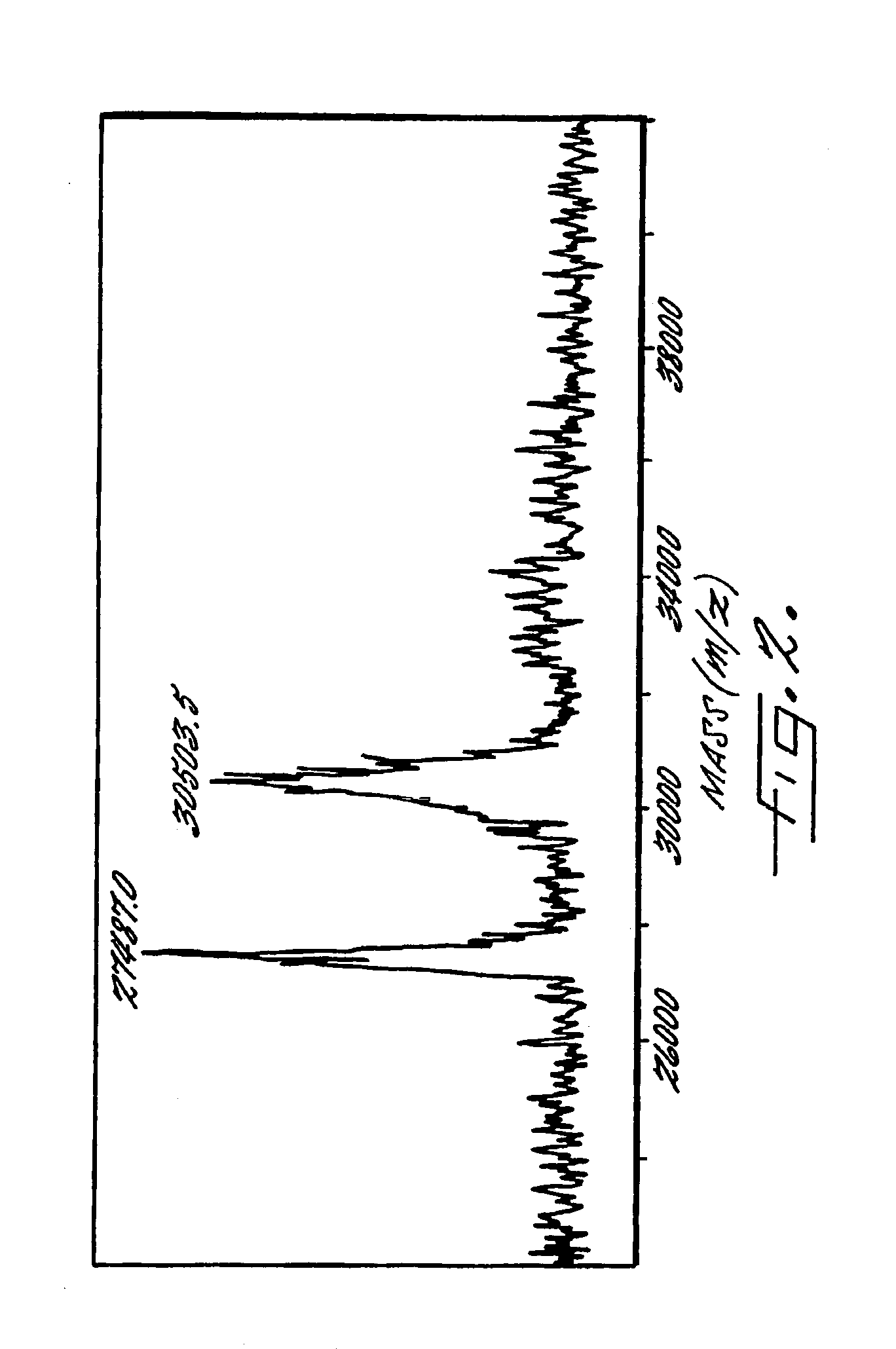Soluble, degradable poly (ethylene glycol) derivatives for controllable release of bound molecules into solution
a technology of soluble degradable polyethylene glycol and hydrophilic polymer, which is applied in the direction of synthetic polymeric active ingredients, organic active ingredients, pharmaceutical non-active ingredients, etc., can solve the problems of toxic or otherwise undesirable residues, undesirable immune responses, and art-induced problems
- Summary
- Abstract
- Description
- Claims
- Application Information
AI Technical Summary
Benefits of technology
Problems solved by technology
Method used
Image
Examples
example 1
Preparation of CH3O-PEG-O—(CH2)n—COO—CH2—COOH (n=1: mPEG-CM-GA-NHS, and n=2: mPEG-PA-GA-NHS)
Reactions:
CH3O-PEG-O—(CH2)n—COOH 3000 (3.0 g, 1 mmole, mPEG-CM or mPEG-PA) was azeotropically dried with 60 ml of toluene under N2. After two hours, the solution was cooled to room temperature, and thionyl chloride solution (2 ml, 4 mmole) in CH2CL2 was injected. The solution was stirred at room temperature overnight. The solvent was condensed on a rotary evaporator and the residual syrup was dried in vacuo for about four hours over P2O5 powder. Glycolic acid (0.2 g, 2.7 mmole) was azeotropically distilled with 70 ml of 1,4-dioxane and the distillation was stopped when approximately 20 ml of solution remained. The solution was slowly cooled to room temperature under N2. The glycolic acid / dioxane solution was then added to the dried PEG acyl chloride. After the PEG was dissolved, 0.6 ml of dry triethylamine was injected to the system (precipitate formed immediately) and the solution was stirr...
example 2
Preparation of HOOC—CH2—OOC—CH2—O-PEG-O—CH2—COO—CH2—COOH
Reactions:
Difunctional carboxymethyl PEG-ester benzyl glycolate 20,000: Difunctional carboxymethyl PEG 20,000 (4 gram, 0.4 mmole acid group), benzyl glycolate (0.6 mmole), dimethylaminopyridine (0.44 mmole), 1-hydroxybenzotriazole (0.4 mmole) and dicyclohexylcarbodiimide (0.56 mmole) were dissolved in 40 ml of methylene chloride. The solution was stirred at room temperature under N2 overnight. The solvent was then removed under vacuum and the resulting residue was added to 20 ml of toluene at 40° C. The undissolved solid was removed by filtration and the filtrate was added to 200 ml of ethyl ether. The precipitate was collected by filtration and dried in vacuo. Yield 4 gram (100%). 1H NMR(DMSO-d6): δ 3.5 (br m, PEG), 4.81 (s, PEGCOOCH2COOCH2C6H5), 5.18 (s, PEGOCH2COOCH2COOCH2C6H5), 7.37 (s, PEGOCH2COOCH2COOCH2C6H5), 4.24 (s, PEGOCH2COOCH2COOCH2C6H5).
Difunctional carboxymethyl PEG-ester benzyl glycolate 20,000 (3 gram) and Pd / C...
example 3
Preparation of CH3O-PEG-O—(CH2)n—COO—CH2—COONHS
Reactions:
CH3O-PEG-O—(CH2)n—COO—CH2—COOH (1 g, approx. 0.33 mmole) and 42 mg N-hydroxysuccinimide (NHS) (0.35 mmole) was dissolved in 30 ml of dry methylene chloride. To it was added dicyclohexylcarbodiimide (DCC) (80 mg, 0.38 mmole) in 5 ml of dry methylene chloride. The solution was stirred under nitrogen overnight and the solvent was removed by rotary evaporation. The resulting syrup was redissolved in 10 ml of dry toluene and the insoluble solid was filtered off. The solution was then precipitated into 100 ml of dry ethyl ether. The precipitate was collected by filtration and dried in vacuo. Yield 0.95 g (95%). 1H NMR (DMSO-d6): δ 3.5 (br m, PEG), 5.15-5.21 (s, PEGCOOCH2COONHS), 2.67 (t, PEGOCH2CH2COO (PA)), 4.27 (s, PEGOCH2COO ppm(CM)), 2.82 (s, NHS, 4 H).
PUM
| Property | Measurement | Unit |
|---|---|---|
| Mass | aaaaa | aaaaa |
| Structure | aaaaa | aaaaa |
| Size | aaaaa | aaaaa |
Abstract
Description
Claims
Application Information
 Login to View More
Login to View More - R&D
- Intellectual Property
- Life Sciences
- Materials
- Tech Scout
- Unparalleled Data Quality
- Higher Quality Content
- 60% Fewer Hallucinations
Browse by: Latest US Patents, China's latest patents, Technical Efficacy Thesaurus, Application Domain, Technology Topic, Popular Technical Reports.
© 2025 PatSnap. All rights reserved.Legal|Privacy policy|Modern Slavery Act Transparency Statement|Sitemap|About US| Contact US: help@patsnap.com



